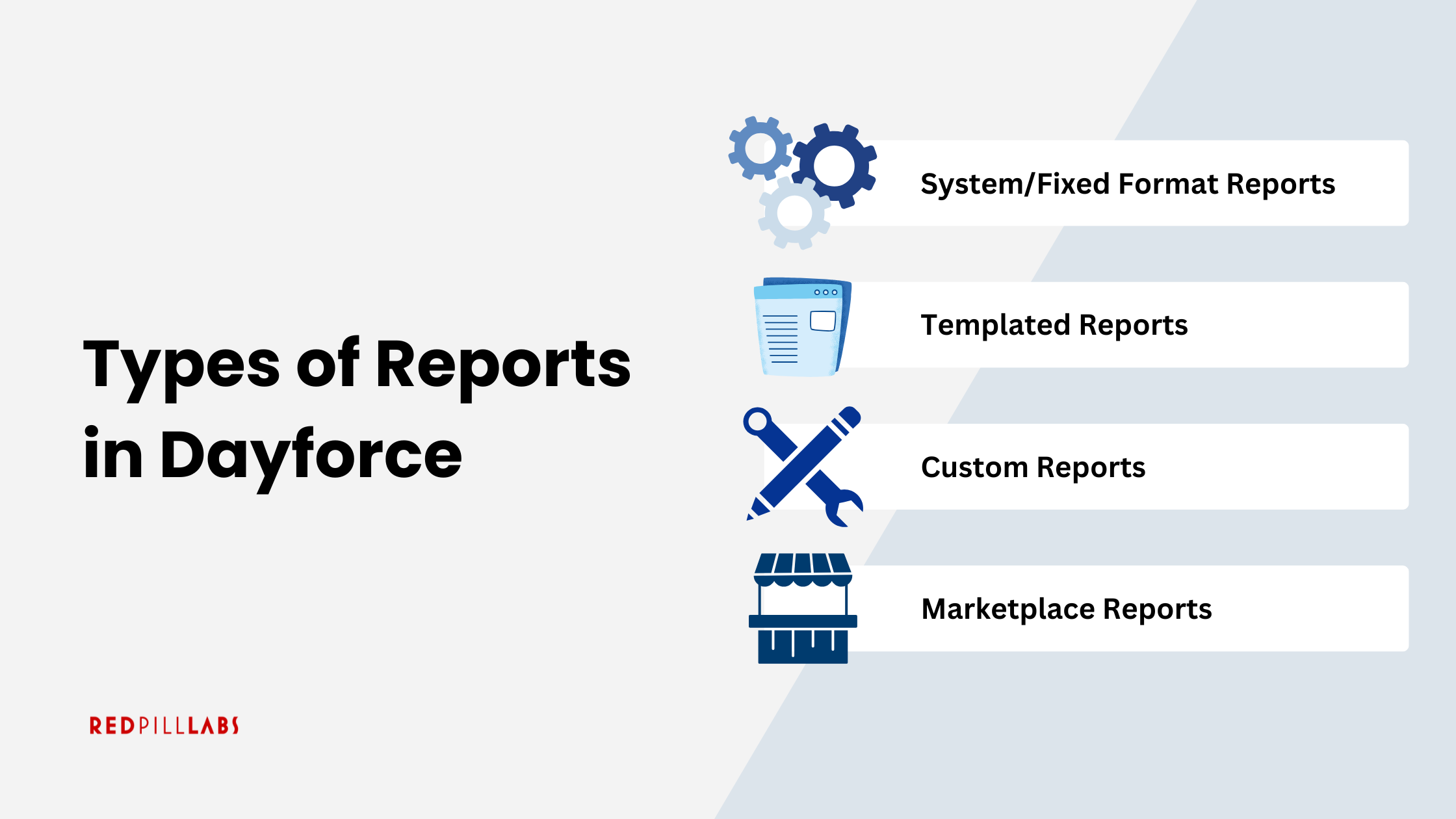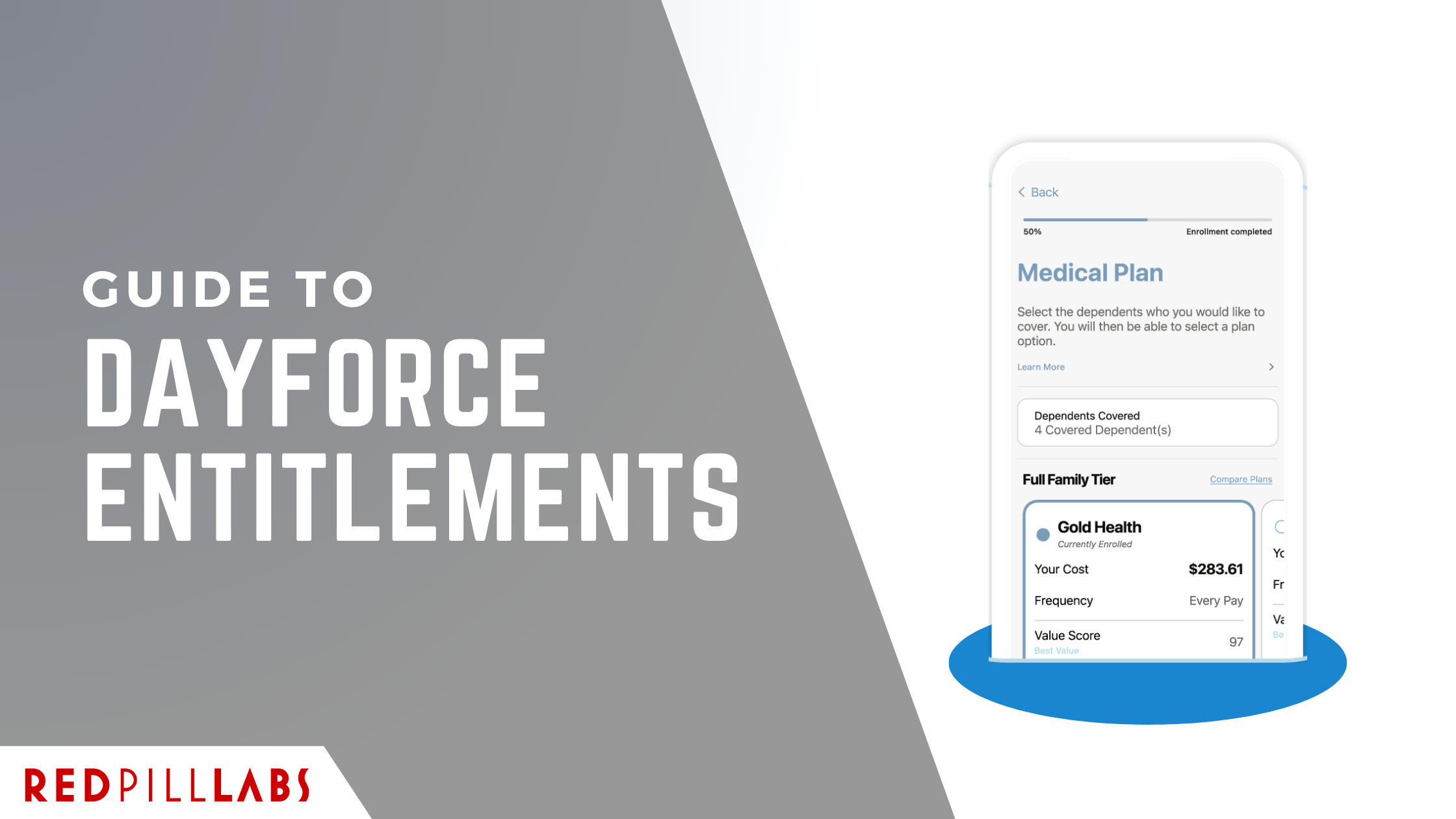Guide to Dayforce Reporting
blog/guide-to-dayforce-reporting
2025-08-06
Understand Dayforce Reporting and Get the Most Out of Your Data
Reporting in Dayforce lets users access and analyze data across all modules thanks to its centralized Microsoft SQL Server (MSSQL) database.
Whether you're looking to run a quick prebuilt report or build a highly customized analytics view, Dayforce has tools to meet your needs.
This guide will walk through the major types of reports available, when to use each, and where to go when you need advanced support.
Types of Reports in Dayforce
1. System/Fixed Format Reports
These are prebuilt, read-only reports that come standard with Dayforce.
You’ll find them in specific modules (e.g., People > Reports, Payroll > Reports).
Look for them with grey icons.
Key Features:
Cannot be edited.
Good for basic, standardized reporting needs (e.g., Employee Profile, Pay Statements).
Often used for audits or compliance-related data pulls.
Limitations:
No filters or field additions allowed.
Enhancement requests must go through the AHA Portal.
2. Templated Reports
Found under Reporting & Analytics > Reporting, templated reports are more flexible than fixed-format reports and can be customized for layout, filters, and data columns.
These are perfect for users with recurring reporting needs.
Look for blue-grey icons in the interface.
Key Features:
Editable (add/remove fields, change sorting, apply filters).
Save as new versions for re-use.
Can be scheduled for automated delivery (after saving a copy).
Limitations:
Access to newer reporting features may require Client Administrator permissions.
V1-based templated reports have limited distribution options (see below).
3. Custom Reports
Custom reports give you full control over what data you extract and how it's structured. You can build one from scratch or start from a copied templated report.
Look for blue icons under Classic Reports.
To build a custom report, you’ll use:
A Topic (predefined set of database tables), or
A Topic-less approach (start from scratch and choose tables manually).
Understanding Topics in Dayforce Reporting:
There are three types of topics in Dayforce, each with different capabilities.
1. V1 Topics
Built using SQL by Ceridian or via support cases.
Cannot be modified by users.
Limited scheduling: reports can only be delivered to the creator.
2. V2 Topics
User-friendly and editable via the UI.
Allow users to add related tables.
Reports can be scheduled and delivered to multiple users or roles.
Limited when needing cross-module data (e.g., Payroll + Benefits).
3. Topic-less
Most flexible method—start fresh with selected entities.
Like V2, but with full table control.
Requires a basic understanding of data relationships (joins).
Not ideal for advanced logic or merged module data.
4. Marketplace Reports
The Report Marketplace offers a curated library of reports built by Dayforce experts.
Accessible from the navigation panel or via Reporting > Add Report from Marketplace.
Key Features:
Preview, filter, and add to your report library.
Customize after saving.
Leave feedback and ratings for other users to see.
Tools & Resources
Dayforce has several support tools to help users optimize reporting capabilities:
Fixed Format Reporting Guide
Lists all fixed reports and their filters.
Reporting Reference Guide
Deep dive into topics, field types, and data dictionaries.
Knowledge Base
Tutorials like “How to build a report on employee balances.”
Data Dictionary Export
Automatically generates a downloadable Excel list of available tables/fields.
Help Portal (help.dayforce.com)
Includes the Implementation Guide, Release Notes, and more.
Reporting Community Groups
Interact with other clients, share tips, and ask questions.
Need Something More Complex?
Dayforce's standard and templated reporting tools are powerful, but they don’t cover every scenario—especially if you:
Need cross-module data joins (e.g., Time + Payroll),
Want to add complex logic or calculated fields,
Require SQL-backed customization or automation.
In these cases, we’re here to help.
Contact our team for support with complex or custom reporting projects.
We work closely with Dayforce Users and your organization’s key stakeholders to ensure you get the insights you need.
Key Takeaways
Dayforce Reporting offers a wide array of tools suited to both everyday users and experienced report builders.
With the right understanding of which report type to use—and support when you need it—you can unlock the full potential of your data.
Looking for custom help or want to talk through your reporting needs? We’re just a message away.





